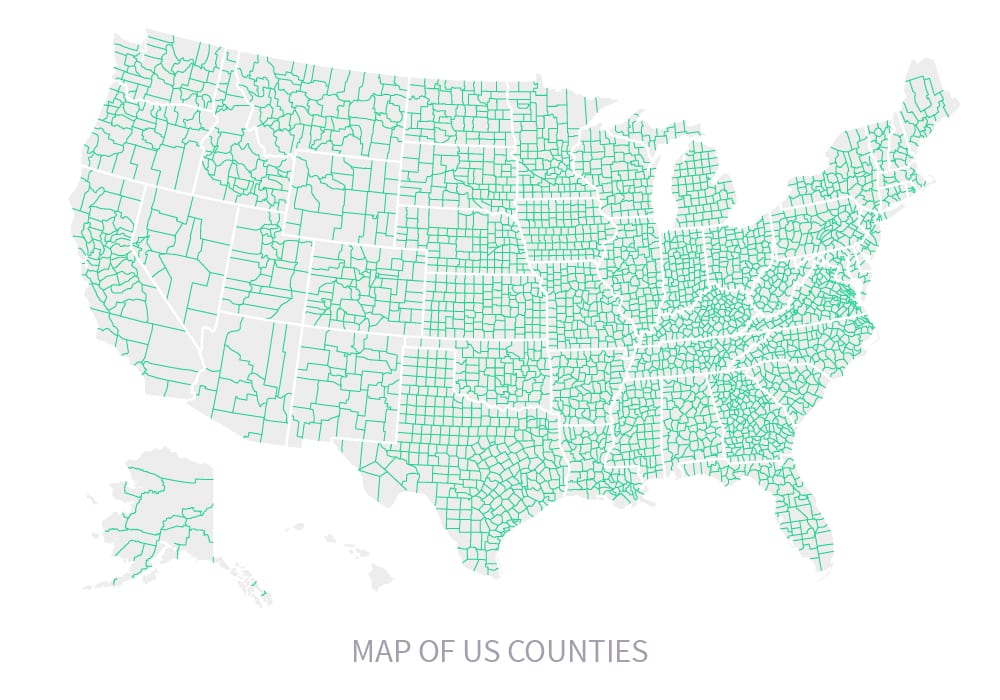Is County Management Ready for Artificial Intelligence?
.png)
Zencity
The Platform for Community Trust
County management has always been characterized by a unique challenge: the complex task of providing a wealth of services to multiple communities which are sometimes very different in nature – all in parallel. To complicate things, these communities often have different interests, constraints, and needs, and counties must often balance between county initiatives and the demands of the cities and towns within their jurisdiction. And just to add one more layer of complexity, the services a county provides to its residents vary within the county’s borders depending on factors like whether the county is serving a town, city, or unincorporated area. It doesn’t help that the residents who live within a county aren’t always able to distinguish or understand (or care about!) which entity provides which service.
The good news is that the technology tools that have long been available to the private sector are increasingly making waves in the public sector, and county managers don’t have to be late to the game as affordable, out-of-the-box solutions built especially for local governments hit the market.
Artificial Intelligence (AI) is just one of the game-changing technologies that counties can and should be leveraging. There’s incredible potential for counties, in particular, to reap the benefits of AI to help them operate more efficiently and be more effective and inclusive in the services they provide, especially when it comes to gathering and understanding community feedback.
What is AI for Local Government?
To understand the real (unlimited) value of AI to counties, it’s important to understand what AI is beyond being a buzzword.
AI “leverages computers and machines to mimic the problem-solving and decision-making capabilities of the human mind.”
If you’ve got Siri, Alexa, or Netflix in your life (and you definitely have Netflix in our post-pandemic world), you’ve seen first hand what AI can do just in your own home: gather information, recognize patterns in data, and form conclusions independently of outside influence. Siri and Alexa are able to provide you, as an individual, with unique answers and solutions because of the access they have to vast amounts of data. On a larger scale, the question is how different industries can incorporate AI into their day-to-day and strategic operations to positively impact the lives of more than just one person or household.

AI has emerged at a critical time: one in which we’re generating more data than ever before. Current estimates read that we are generating 1.145 trillion MB per day, at an average of about 1.7 MB of data per second per person. Think about the size of your county and how many residents you serve. Now think about all the data gold that’s out there. But, as much as we attempt to be organized, the ability to process this volume of data manually is impossible – and nowhere is this truer than in a local government organization whose mainstay is serving people, not analyzing data. Because we are generating more data than we can handle, realistically there’s no way to process, let alone derive value from so much data manually. This is exactly where AI comes in.
So, how can analyzing this data help a county better serve residents? There are many use cases of AI for local government – but we want to focus on one use case based on our work with over 200 cities and counties across the United States: AI for community engagement and for gathering and analyzing community feedback. We’ve identified a few county hurdles that AI can help county managers overcome when it comes to resident input.
Hurdle #1 Getting community feedback, especially when there is confusion of jurisdictional authority
Most residents have very little understanding of the services their county provides or understand what falls under county responsibilities – so getting feedback on county services is especially tough
From regional transit to the court system to health to libraries, so many services that residents interact with on a daily basis are often provided by the county under the branding of the city. For example, Rochester International Airport in New York, which is operated by Monroe County; or the Fremont Main Library in California, which is operated by the County of Alameda. It makes sense that when residents go to express concern or complain about a service, they often contact the city rather than the county – if even that. This is because, frankly, most Americans just aren’t that familiar with the distinction between city versus county services. This makes it incredibly difficult for counties to get feedback because most residents assume they should approach the city.
To make things even more complicated beyond the challenge of little engagement with residents, many counties get little to no feedback on county services because – outside of the county’s own initiatives – the transfer of information from the city is often slow and inconsistent.
Community feedback is one realm in which AI can become an invaluable resource for counties. Residents discuss county services quite often, just not directly with the county. By automatically aggregating the mass amount of resident feedback data that’s already out there, and then automatically analyzing and sorting it by categories like county-related topic, policy, initiative, or department, Artificial Intelligence can help a county sort through and understand the data relevant to the services a county provides. Furthermore, a strong AI sentiment model can determine trends within the feedback and provide recommendations for how residents think the service can be improved.

Hurdle #2 Counties Serve Very Diverse Communities
Servicing all corners of your jurisdiction is difficult, especially if you aren’t getting resident input from all of the different communities you serve
Kalawao County has the smallest population of any American county with a grand total of 86 residents. For a county this size, on the outskirts of the Hawaiian islands, understanding the unique views of each resident isn’t that difficult. On the other end of the spectrum is Los Angeles County, home to almost 10 million residents. Dozens of dialects and languages, a geographical area the size of Massachusetts, residents on all ends of the socio-economic spectrum, movie stars – understanding the needs and priorities of such a diverse population is downright impossible. There are too many factors for the human mind to combine and create any statistical outcome.
With the help of Artificial Intelligence, one can more easily understand the intersectionality of all of these groups. For starters, with AI, vast quantities of data can be processed at the speed of light, splitting the data into different categories. No more trying to process feedback from 10 million residents manually through a spreadsheet or via a lengthy and costly consulting process. Furthermore, communities as diverse as Los Angeles require a large breadth of data sources as different communities use different methods to communicate. For example: social media – Twitter v. Facebook; different local news sources and outlets; offline channels; some communities are likely to use formal complaint channels or mobile apps for different services – like the LA Metro – and the list goes on.
Using AI, all of these sources can be combined and processed in one place, in real-time, to sort which data is relevant for county management. AI can then transform this data from millions of residents into something quantifiable, measurable, and trackable. Moreover, data is often siloed by county department – even when the information can be interrelated. AI can help bring siloed data into one place.
Hurdle #3 Counties Serve Unincorporated Areas
Servicing residents in unincorporated areas is incredibly important yet getting feedback from these residents can be incredibly difficult
Many counties provide services to areas that no town claims as its own. These unincorporated areas are sometimes marshes with lots of water and other times they are areas with thousands of residents that just haven’t become a town or city (or don’t want to!). These unincorporated areas can be incredibly complex and difficult to manage because, although there aren’t conflicting interests with a city, the county also has no one to split the responsibility of serving residents with – like a city body.
Understanding what to prioritize in unincorporated areas is therefore paramount. But without a good connection to residents and a good way to assess their pain points, this is an incredibly difficult task.
By analyzing and quantifying resident feedback data, AI can help a county understand what residents want and need, and in what hierarchy. Being able to measure the amount of positive or negative sentiment around different issues can help a county understand how important that issue is and what a county needs to tackle first. AI can also help counties provide more localized solutions and services – particularly when there isn’t a municipal body available to provide more tailored attention. AI can enhance geo-location data by analyzing what residents are discussing and not just where they’re discussing from – which can play a crucial role in parsing information by area and need. Counties can get a better understanding of what residents’ priorities are based on county-area, and prioritize strategically according to real community feedback.

Hurdle #4 Counties are Managing America’s Biggest Challenges
Finally, from COVID-19 to the opioid crisis to rising rates of homelessness, counties often deal with the heaviest and most high-stakes challenges Americans face. The pandemic has especially shown the way in which counties are on the front line, providing health-related services with life or death consequences. Unfortunately, there is no quick-fix technology answer for the devastating effects of some of these challenges. But the data that’s out there can help counties tackle these challenges more effectively, and AI can be a powerful tool in making this data useful. There are a plethora of different types of data-sets that, when tapped into, can help counties better understand and map challenges, and more importantly, measure the impact of different policies and solutions. Good performance management of a county solution, policy, or initiative, can be a life or death issue. Is this new initiative moving the needle? Are county residents aware of it? If they’re not using new services offered, then why not? Where in the county is one solution more effective than others? Why? Imagine if you could answer all of these questions in the click of a button. And imagine if you could answer these questions in real-time, and over-time. This can be during the planning process of a service – to help you design it; in the middle of a promotional campaign – where you begin sharing the new service with residents; three-weeks or three months in. AI can help you do this.
AI can analyze feedback data about specific topics of interest – not just general feedback – to help a county track its new or existing policy, service, or proposed solution. When it comes to sensitive issues – the need to have an immediate and nuanced understanding, and to be able to closely track resident feedback and response is imperative because a county cannot afford to fail or let a trial-and-error phase last too long. AI can sort out which data is relevant to a specific issue or topic and help the county track it across all the departments it touches. Overlaying feedback data with other data the county is collecting can be invaluable. For example, a county that offers new health services for opioid users, along with launching a Public Service Campaign to increase awareness, can compare the number of overdose incidents to the usage of the services to engagement on the campaign and response to it. AI, therefore, can’t solve the crisis, but it can help a county better manage and respond to its impact.
Is AI Right for County Management?
The answer is a resounding yes. AI has the capability of being the new frontier for county management and the potential to transform the policy-making process into one that is more effective and inclusive, incorporating widespread feedback from a broader-base of residents than ever before.
We’re knee deep in the era of change, and the data is certainly out there to help counties make strategic changes to improve the safety, services, and quality of life for their residents. The name of the game is figuring out how to transform all aspects of everyday life in counties – with AI at the core.
%20copy-1.png?width=544&height=120&name=Logo_black%20(1)%20copy-1.png)



